
The Heart of Heritage: Sikandra in Agra
Discover Sikandra: A Blend of Mughal Majesty and Tranquil Gardens in Agra's Historic Heart.
Sikandra, located in the vibrant city of Agra, India, is a neighborhood steeped in rich history and architectural splendor. It is most renowned for the grand Akbar's Tomb, a magnificent mausoleum that combines Mughal and Persian architectural styles. This monument is not just a resting place but a testament to the artistic and cultural zenith of the Mughal Empire, attracting history buffs and art lovers alike. The lush gardens surrounding Akbar's Tomb offer a serene escape from the bustling city. These gardens are designed in the traditional charbagh style, divided into four parts by walkways and water channels, symbolizing the Islamic concept of paradise. Here, you can enjoy a leisurely stroll, take in the intricate design details, or simply relax while listening to the melodic chirping of birds. Sikandra is also home to various other attractions that provide a glimpse into the local lifestyle and culture. The nearby markets are a treasure trove of handicrafts, textiles, and traditional jewelry, perfect for picking up souvenirs. Additionally, the neighborhood's eateries offer a taste of authentic Mughlai cuisine, with dishes that are as rich in flavor as the area's history.
Local tips in Sikandra
- Visit early in the morning to avoid the crowds and enjoy the serene beauty of Akbar's Tomb.
- Wear comfortable walking shoes as the gardens and surrounding areas involve a fair amount of walking.
- Carry a water bottle, especially during the summer months, as temperatures can soar.
- Hire a local guide for in-depth insights into the historical and architectural significance of the monuments.
- Don't miss the local markets nearby for unique souvenirs and traditional crafts.
The Heart of Heritage: Sikandra in Agra
Sikandra, located in the vibrant city of Agra, India, is a neighborhood steeped in rich history and architectural splendor. It is most renowned for the grand Akbar's Tomb, a magnificent mausoleum that combines Mughal and Persian architectural styles. This monument is not just a resting place but a testament to the artistic and cultural zenith of the Mughal Empire, attracting history buffs and art lovers alike. The lush gardens surrounding Akbar's Tomb offer a serene escape from the bustling city. These gardens are designed in the traditional charbagh style, divided into four parts by walkways and water channels, symbolizing the Islamic concept of paradise. Here, you can enjoy a leisurely stroll, take in the intricate design details, or simply relax while listening to the melodic chirping of birds. Sikandra is also home to various other attractions that provide a glimpse into the local lifestyle and culture. The nearby markets are a treasure trove of handicrafts, textiles, and traditional jewelry, perfect for picking up souvenirs. Additionally, the neighborhood's eateries offer a taste of authentic Mughlai cuisine, with dishes that are as rich in flavor as the area's history.
Iconic landmarks you can’t miss
Tomb of Akbar
Explore the Tomb of Akbar: A stunning historical landmark showcasing Mughal architecture amidst beautiful gardens in Agra, India.

Sikandra Fort
Explore Sikandra Fort in Agra, a stunning historical landmark and the majestic tomb of Akbar the Great, rich in Mughal architecture and serene gardens.
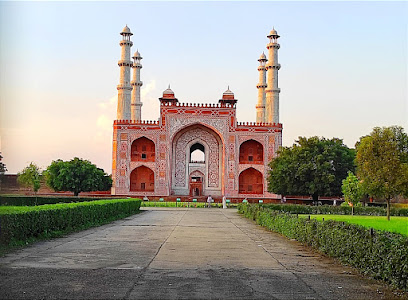
Kanch Mahal
Explore Kanch Mahal in Agra, a stunning Mughal-era palace surrounded by lush gardens, showcasing exquisite architecture and rich history.

Dhakri Ka Mahal
Explore the enchanting Dhakri Ka Mahal in Agra, a hidden architectural gem steeped in history and surrounded by serene landscapes.

Akbar Tomb Vijay Market
Discover the majestic Akbar Tomb in Agra, an architectural marvel surrounded by lush gardens, illustrating the grandeur of Mughal heritage.

sikandra tomb
Explore the grandeur of the Tomb of Akbar the Great, a UNESCO World Heritage Site showcasing Mughal architecture and rich history in Agra.

Sikandra Chungi
Explore Sikandra Chungi, a historical landmark in Agra, rich in culture and architectural beauty, offering a serene escape into India's past.

The Lodhi Tomb
Discover the serene beauty and rich history of the Lodhi Tomb, a magnificent monument reflecting the grandeur of the Mughal Empire in Agra.

Jahangir Gate
Discover the majestic Jahangir Gate, a stunning historical landmark in Agra, showcasing the splendor of Mughal architecture and rich heritage.

LODHI Tomb लोधी का मकबरा
Discover the Lodi Tomb in Agra, an exquisite historical landmark showcasing Mughal architecture and serene gardens perfect for exploration.

Unmissable attractions to see
Gurudwara Guru Ka Taal
Explore Gurudwara Guru Ka Taal, a serene Sikh temple in Agra, blending spirituality, stunning architecture, and rich cultural heritage in a tranquil setting.

Tomb of Akbar
Explore the Tomb of Akbar, a stunning Mughal architectural masterpiece in Agra, rich in history and scenic beauty.

Shaheed Smarak
Discover the serene beauty of Shaheed Smarak in Agra, a park that pays homage to the nation's heroes amidst lush greenery and historical significance.

Sikandra Fort
Discover the architectural wonder of Sikandra Fort, the serene tomb of Akbar the Great, blending history and beauty in Agra.
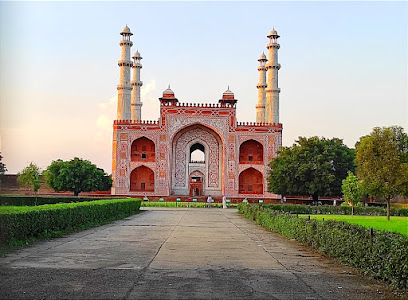
Anguri Bagh
Discover the tranquil beauty of Anguri Bagh, a serene garden nestled in Agra Fort, showcasing Mughal architecture and lush landscapes.

Tomb of Mariam-UZ-Zamani
Uncover the beauty of Mughal architecture at the Tomb of Mariam-UZ-Zamani in Agra. A serene historical landmark that embodies India's rich cultural heritage.
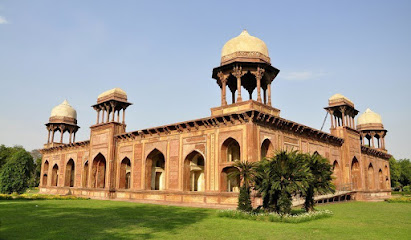
Dhakri Ka Mahal
Discover the serene beauty and rich history of Dhakri Ka Mahal, a tranquil monument in Agra that offers a unique glimpse into India's architectural heritage.

Paschimpuri Park
Experience the peaceful beauty of Paschimpuri Park in Agra, a perfect escape for nature lovers and families alike.

The Lodhi Tomb
Discover the beauty and history of The Lodhi Tomb in Agra, a stunning example of Mughal architecture and a serene escape into India's royal past.

Essential places to dine
Roofmates-Best Rooftop Restaurant in Agra
Savor delightful dishes at Roofmates - Agra's top rooftop restaurant featuring stunning views and diverse cuisine options.

Jail House !! PURE VEGETARIAN RESTAURANT.
Discover unique vegetarian flavors at Jail House - Agra's quirky pure vegetarian restaurant nestled in Cross Road Mall.

Pind Balluchi - Best non-veg Restaurant in Agra
Experience the rich flavors of Punjab at Pind Balluchi, Agra's top destination for delicious buffet dining.

The Sky Restaurant & family Roof Top
Experience breathtaking views and exquisite Indian cuisine at The Sky Restaurant in Sikandra, Agra.
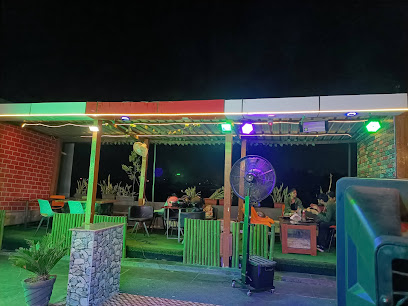
Mama Chicken Mama Franky House
Discover delightful Mughlai and Chinese flavors at Mama Chicken Mama Franky House in Agra – a culinary destination for chicken lovers.
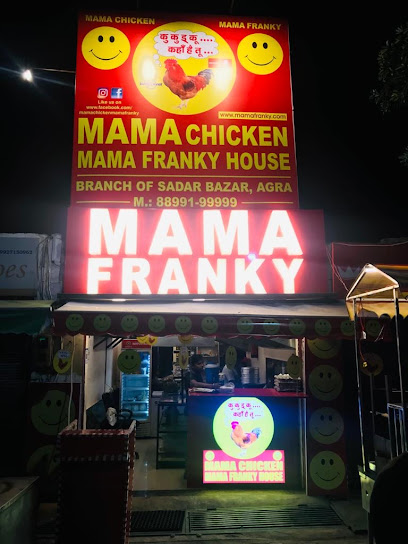
The MasterChef Restaurant
Discover the culinary delights of The MasterChef Restaurant in Agra – where Indian cuisine meets fast food in a vibrant setting.

Pari restaurant
Experience family-friendly dining at Pari Restaurant in Agra, where authentic flavors meet welcoming hospitality for an unforgettable culinary journey.

THE SKY TRAIN RESTAURANT
Experience whimsical dining at The Sky Train Restaurant in Agra – where meals are served on miniature trains in a family-friendly atmosphere.

Hungrill restaurant and cafe
Discover exquisite flavors at Hungrill Restaurant and Cafe in Agra - where culinary artistry meets local heritage near iconic attractions.

Sikandra Chaupati Cafe & Restaurant
Discover diverse flavors at Sikandra Chaupati Cafe & Restaurant in Agra - where Indian, Chinese, Italian & South Indian cuisines meet!

Markets, malls and hidden boutiques
V-Mart - Agra-Sikandra
Discover V-Mart Agra-Sikandra, where shopping meets local culture with a variety of clothing and everyday essentials in a vibrant atmosphere.

FirstCry Store Sikandra Agra - Best kids store in Agra
Explore the FirstCry Store in Sikandra, Agra, for a delightful shopping experience filled with quality baby products and expert guidance.

Friends boutique
Discover the perfect blend of traditional and modern fashion at Friends Boutique in Agra – a must-visit shopping destination for style enthusiasts.

Maa Janki Collection
Explore the vibrant fashion scene at Maa Janki Collection, Agra's ultimate destination for trendy clothing, stylish belts, and fashionable sunglasses.

The gift gallery and toy store
Discover unique souvenirs and toys at Agra's charming gift gallery, capturing the essence of Indian culture in every item.

The secret shop
Discover a world of exquisite lingerie at The Secret Shop in Agra, where quality meets style in an inviting atmosphere.

She Collection & Fully Gift Shop
Explore the vibrant She Collection & Fully Gift Shop in Agra for unique gifts and stylish clothing reflecting local culture and craftsmanship.

New Variety saree Showroom
Explore the vibrant world of sarees at New Variety Saree Showroom, Agra's premier destination for traditional and contemporary Indian fashion.

Chaudhary Gift Store
Discover Chaudhary Gift Store in the heart of Agra's Vijay Market, a unique destination for local gifts and hardware, blending culture with commerce.

Toys & gift Store
Uncover a world of fun at Agra's premier Toys & Gift Store, where delightful treasures await for all ages.
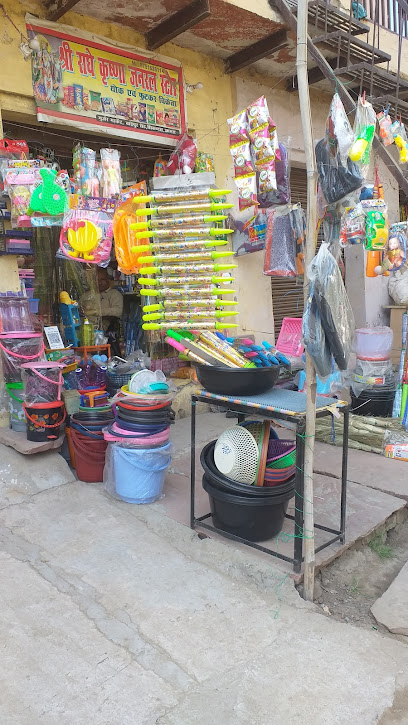
Essential bars & hidden hideouts
Roofmates-Best Rooftop Restaurant in Agra
Discover Roofmates in Agra - where culinary delights meet breathtaking rooftop views, perfect for every food enthusiast.

Fakira club - Best rooftop cafe in Agra / Best rooftop lounge in Agra / Best rooftop bar in Agra
Discover the breathtaking views and vibrant atmosphere at Fakira Club, Agra's premier rooftop cafe, lounge, and bar.
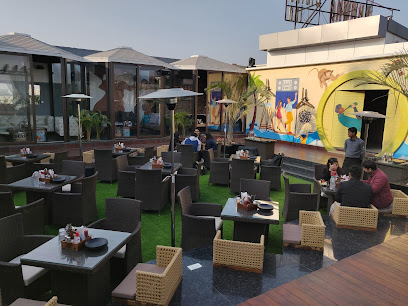
Moon Bar & Restaurant
Experience unforgettable dining at Moon Bar & Restaurant in Agra, where local flavors meet international cuisine in a stunning setting.

Milan Bar & Restaurant
Experience the best of grilling and bar delights at Milan Bar & Restaurant in Agra, where every meal is a celebration of flavors.

The Plug lounge & disc
Discover the vibrant nightlife of Agra at The Plug Lounge & Disc, where electrifying music and a lively atmosphere await.

Kaafila Club & Rooftop
Discover a fusion of exquisite dining and vibrant nightlife at Kaafila Club & Rooftop in Agra, where every sunset brings a new experience.
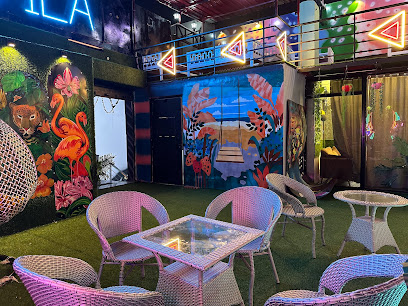
The Wiings Restaurant & Cafe
Discover a delightful culinary escape at The Wiings Restaurant & Cafe in Agra, offering a perfect blend of flavors and a cozy atmosphere.

K. K. Bar And Restaurant
Discover the vibrant flavors of Agra at K. K. Bar And Restaurant, where local cuisine meets a lively bar atmosphere.

Red Eye - Cocktail House
Discover vibrant nightlife at Red Eye - Cocktail House in Agra, offering innovative cocktails and a lively atmosphere for an unforgettable experience.

HANGOUT - THE LOUNGE BAR
Experience the vibrant nightlife of Agra at Hangout - The Lounge Bar, where relaxation meets exquisite taste in a charming setting.

Local Phrases
-
- Helloनमस्कार
[Namaskar] - Goodbyeअलविदा
[Alvida] - Yesहां
[Haan] - Noनहीं
[Nahi] - Please/You're welcomeकृपया
[Kripya] - Thank youधन्यवाद
[Dhanyavad] - Excuse me/Sorryक्षमा कीजिये
[Kshama kiijiye] - How are you?आप कैसे हैं?
[Aap kaise hain?] - Fine. And you?ठीक हूँ। आप?
[Theek hoon. Aap?] - Do you speak English?क्या आप अंग्रेज़ी बोलते हैं?
[Kya aap angrezi bolte hain?] - I don't understandमुझे समझ नहीं आया
[Mujhe samaj nahi aaya]
- Helloनमस्कार
-
- I'd like to see the menu, pleaseकृपया मेनू दिखाएं
[Kripya menu dikhaye] - I don't eat meatमैं मांस नहीं खाता
[Main maans nahi khaata] - Cheers!चियर्स!
[Cheers!] - I would like to pay, pleaseकृपया मैं भुगतान करना चाहूं
[Kripya main bhugtan karna chahoon]
- I'd like to see the menu, pleaseकृपया मेनू दिखाएं
-
- Help!मदद!
[Madad!] - Go away!चले जाओ!
[Chale jao!] - Call the Police!पुलिस को बुलाओ!
[Police ko bulaao!] - Call a doctor!डॉक्टर को बुलाओ!
[Doctor ko bulaao!] - I'm lostमैं खो गया हूं
[Main kho gaya hoon] - I'm illमुझे बीमारी है
[Mujhe bimari hai]
- Help!मदद!
-
- I'd like to buy...मैं खरीदना चाहूंगा...
[Main khareedna chahunga...] - I'm just lookingमैं बस देख रहा हूं
[Main bas dekh raha hoon] - How much is it?यह कितने का है?
[Yeh kitne ka hai?] - That's too expensiveयह बहुत महंगा है
[Yeh bahut mehnga hai] - Can you lower the price?क्या आप कीमत कम कर सकते हैं?
[Kya aap keemat kam kar sakte hain?]
- I'd like to buy...मैं खरीदना चाहूंगा...
-
- What time is it?अब कितने बजे हैं?
[Ab kitne baje hain?] - It's one o'clockएक बजे हैं
[Ek baje hain] - Half past (10)दस बजे तक
[Das baje tak] - Morningसुबह
[Subah] - Afternoonदोपहर
[Dopahar] - Eveningशाम
[Shaam] - Yesterdayकल
[Kal] - Todayआज
[Aaj] - Tomorrowकल
[Kal] - 1एक
[Ek] - 2दो
[Do] - 3तीन
[Teen] - 4चार
[Char] - 5पाँच
[Paanch] - 6छह
[Chhah] - 7सात
[Saath] - 8आठ
[Aath] - 9नौ
[Nau] - 10दस
[Das]
- What time is it?अब कितने बजे हैं?
-
- Where's a/the...?वहाँ... कहाँ है?
[Vahaan... kahan hai?] - What's the address?पता क्या है?
[Pata kya hai?] - Can you show me (on the map)?क्या आप मुझे दिखा सकते हैं (नक्शे पर)?
[Kya aap mujhe dikha sakte hain (nakshay par)?] - When's the next (bus)?अगली (बस) कब है?
[Agli (bus) kab hai?] - A ticket (to ....)एक टिकट (किस जगह के लिए)
[Ek ticket (kis jagah ke liye)]
- Where's a/the...?वहाँ... कहाँ है?
History of Sikandra
-
Sikandra is best known for the tomb of Akbar the Great, the third Mughal emperor, who reigned from 1556 to 1605. Constructed between 1605 and 1613, the mausoleum is a stunning example of Mughal architecture, blending Islamic, Hindu, and Persian styles. The site symbolizes Akbar's vision of a unified India and is surrounded by lush gardens, reflective of the Persian style of landscaping.
-
The tomb of Akbar is notable for its intricate marble inlay work, expansive courtyards, and impressive gateways. The use of red sandstone, embellished with white marble and precious stones, exemplifies the grandeur of Mughal architecture. The structure is strategically placed amidst a serene landscape, reflecting Akbar's appreciation for nature and design.
-
Akbar was known for his policy of religious tolerance and efforts to promote a syncretic culture. Sikandra stands as a testament to this ethos, where elements of various religious beliefs, including Hinduism and Sufism, harmoniously coexist. Akbar's establishment of the Din-i Ilahi, a syncretic religion, further showcases his commitment to cultural integration.
-
The Mughal influence in Sikandra and Agra at large is profound, shaping the region's culture, language, and architecture. The period from the late 16th to the early 18th centuries saw an extraordinary flowering of arts and literature, with Sikandra serving as a significant cultural hub. The legacy of the Mughals is still evident in the local traditions, festivals, and culinary practices of Agra.
-
In contemporary times, Sikandra has seen increased tourism due to the popularity of Akbar's tomb. Efforts have been made to preserve the historical site and promote sustainable tourism in the region. Local initiatives aim to educate visitors about the rich history and cultural significance of both Sikandra and Agra, ensuring that the legacy of the Mughal era continues to be celebrated.
Sikandra Essentials
-
Sikandra is easily accessible from other neighborhoods in Agra. It is approximately 10 kilometers from Agra Fort and the Taj Mahal. You can take an auto-rickshaw or taxi, which are widely available. Local buses also connect Sikandra with major tourist attractions in Agra. For those arriving from the Agra Railway Station, taxis and auto-rickshaws are convenient options, taking around 20-30 minutes to reach Sikandra.
-
Sikandra is a relatively small area, and walking is a pleasant way to explore its attractions. Auto-rickshaws are commonly used for longer distances or to reach specific sites within and outside Sikandra. Bicycles can also be rented from local shops to enjoy a leisurely ride around the neighborhood. Public buses operate in the area, connecting Sikandra to other parts of Agra.
-
Sikandra is generally safe for tourists, but standard precautions should be taken. Avoid walking alone at night in poorly lit areas. While there are no specific high-crime areas targeting tourists in Sikandra, petty theft can occur in crowded places. Stay vigilant and keep your belongings secure.
-
In case of an emergency, dial 112 for police assistance or local hospitals. It is advisable to have travel insurance that covers emergencies. For medical issues, there are hospitals and pharmacies in Sikandra. Always carry an ID and inform someone of your whereabouts in case of emergencies.
-
Fashion: Do dress modestly, especially when visiting religious sites. Avoid wearing shorts and sleeveless tops. Religion: Do respect local customs and traditions, and cover your head when entering places of worship. Public Transport: Do be courteous and offer your seat to elderly passengers. Don't eat or drink on public transport. Greetings: Do greet locals with a smile and a nod. Avoid physical contact with the opposite gender unless initiated. Eating & Drinking: Do try local street food but ensure it is freshly prepared. Don't drink tap water; opt for bottled water instead.
-
To experience Sikandra like a local, visit the bustling markets where you can find fresh produce and handicrafts. Engage with local vendors and be open to trying new foods. Attend any local festivals if your visit coincides with one, as they offer a glimpse into the vibrant culture. Visiting the tomb of Akbar is a must, and take the time to explore the surrounding gardens for a peaceful retreat.
Nearby Cities to Sikandra
-
Things To Do in Gwalior
-
Things To Do in Delhi
-
Things To Do in Ranthambore
-
Things To Do in Jaipur
-
Things To Do in Kanpur
-
Things To Do in Lucknow
-
Things To Do in Rishikesh
-
Things To Do in Pushkar
-
Things To Do in Shimla
-
Things To Do in Bhopal
-
Things To Do in Lumbini
-
Things To Do in Jabalpur
-
Things To Do in Jodhpur
-
Things To Do in Udaipur
-
Things To Do in Varanasi








